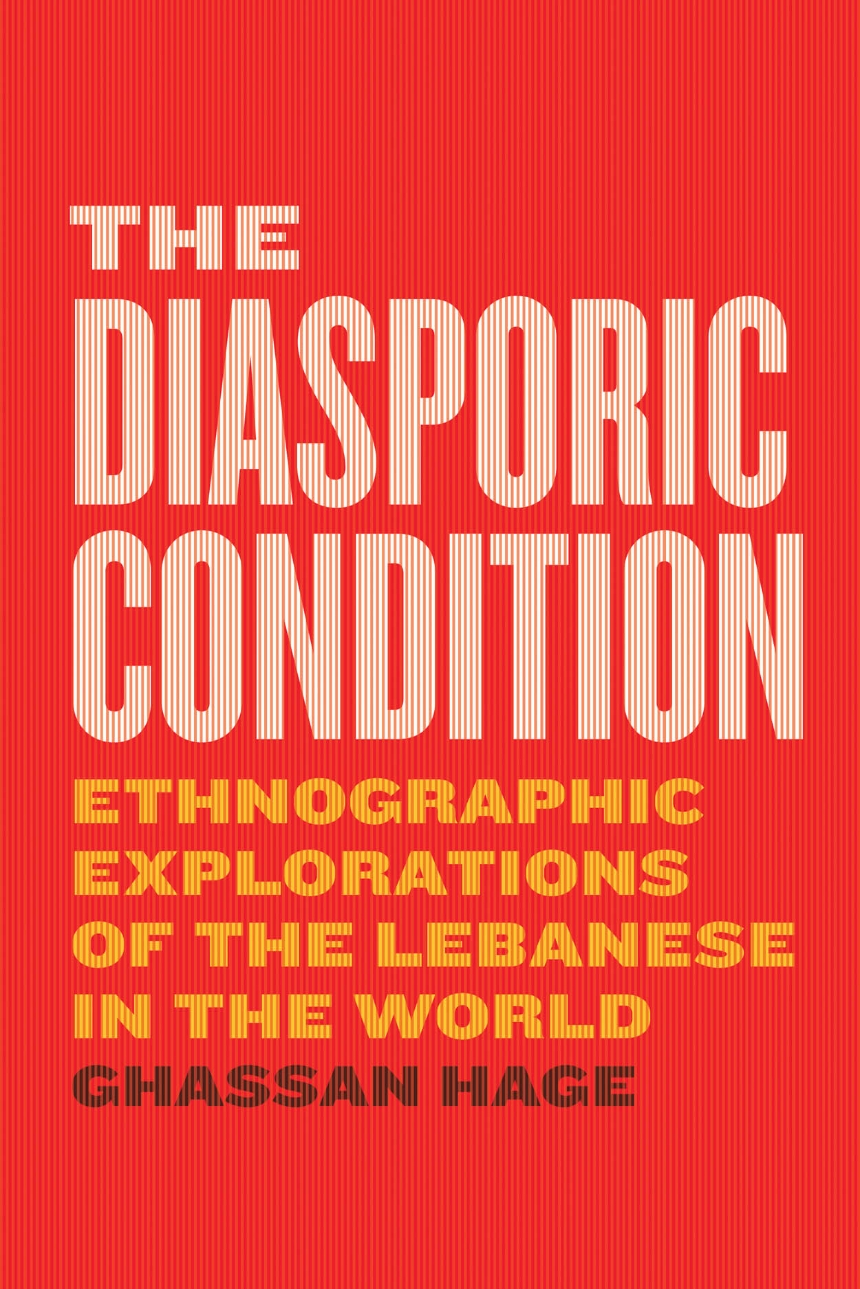The Diasporic Condition
Ethnographic Explorations of the Lebanese in the World
9780226547060
9780226546902
9780226547237
The Diasporic Condition
Ethnographic Explorations of the Lebanese in the World
Bridging the gap between migration studies and the anthropological tradition, Ghassan Hage illustrates that transnationality and its attendant cultural consequences are not necessarily at odds with classic theory.
In The Diasporic Condition, Ghassan Hage engages with the diasporic Lebanese community as a shared lifeworld, defining a common cultural milieu that transcends spatial and temporal distance—a collective mode of being here termed the “diasporic condition.” Encompassing a complicated transnational terrain, Hage’s long-term ethnography takes us from Mehj and Jalleh in Lebanon to Europe, Australia, South America, and North America, analyzing how Lebanese migrants and their families have established themselves in their new homes while remaining socially, economically, and politically related to Lebanon and to each other.
At the heart of The Diasporic Condition lies a critical anthropological question: How does the study of a particular sociocultural phenomenon expand our knowledge of modes of existing in the world? As Hage establishes what he terms the “lenticular condition,” he breaks down the boundaries between “us” and “them,” “here” and “there,” showing that this convergent mode of existence increasingly defines everyone’s everyday life.
In The Diasporic Condition, Ghassan Hage engages with the diasporic Lebanese community as a shared lifeworld, defining a common cultural milieu that transcends spatial and temporal distance—a collective mode of being here termed the “diasporic condition.” Encompassing a complicated transnational terrain, Hage’s long-term ethnography takes us from Mehj and Jalleh in Lebanon to Europe, Australia, South America, and North America, analyzing how Lebanese migrants and their families have established themselves in their new homes while remaining socially, economically, and politically related to Lebanon and to each other.
At the heart of The Diasporic Condition lies a critical anthropological question: How does the study of a particular sociocultural phenomenon expand our knowledge of modes of existing in the world? As Hage establishes what he terms the “lenticular condition,” he breaks down the boundaries between “us” and “them,” “here” and “there,” showing that this convergent mode of existence increasingly defines everyone’s everyday life.
248 pages | 1 halftones, 5 line drawings, 2 tables | 6 x 9 | © 2021
Anthropology: Cultural and Social Anthropology
Geography: Cultural and Historical Geography
Sociology: Individual, State and Society
Reviews
Table of Contents
Preface
Introduction
One Lebanese Capitalism and the Emergence of a Transnational Mode of Existence
Two On Being Propelled into the World: Existential Mobility and the Migratory Illusio
Three Diasporic Anisogamy
Four From Ambivalent to Fragmented Subjects
Five On Diasporic Lenticularity
Six Lenticular Realities and Anisogamic Intensifications
Seven The Lebanese Transnational Diasporic Family
Eight Diaspora and Sexuality: A Case Study
Nine Diasporic Jouissance and Perverse Anisogamy: Negotiated Being in the Streets of Beirut
Conclusion
Acknowledgments
Notes
Bibliography
Index
Introduction
One Lebanese Capitalism and the Emergence of a Transnational Mode of Existence
Two On Being Propelled into the World: Existential Mobility and the Migratory Illusio
Three Diasporic Anisogamy
Four From Ambivalent to Fragmented Subjects
Five On Diasporic Lenticularity
Six Lenticular Realities and Anisogamic Intensifications
Seven The Lebanese Transnational Diasporic Family
Eight Diaspora and Sexuality: A Case Study
Nine Diasporic Jouissance and Perverse Anisogamy: Negotiated Being in the Streets of Beirut
Conclusion
Acknowledgments
Notes
Bibliography
Index
